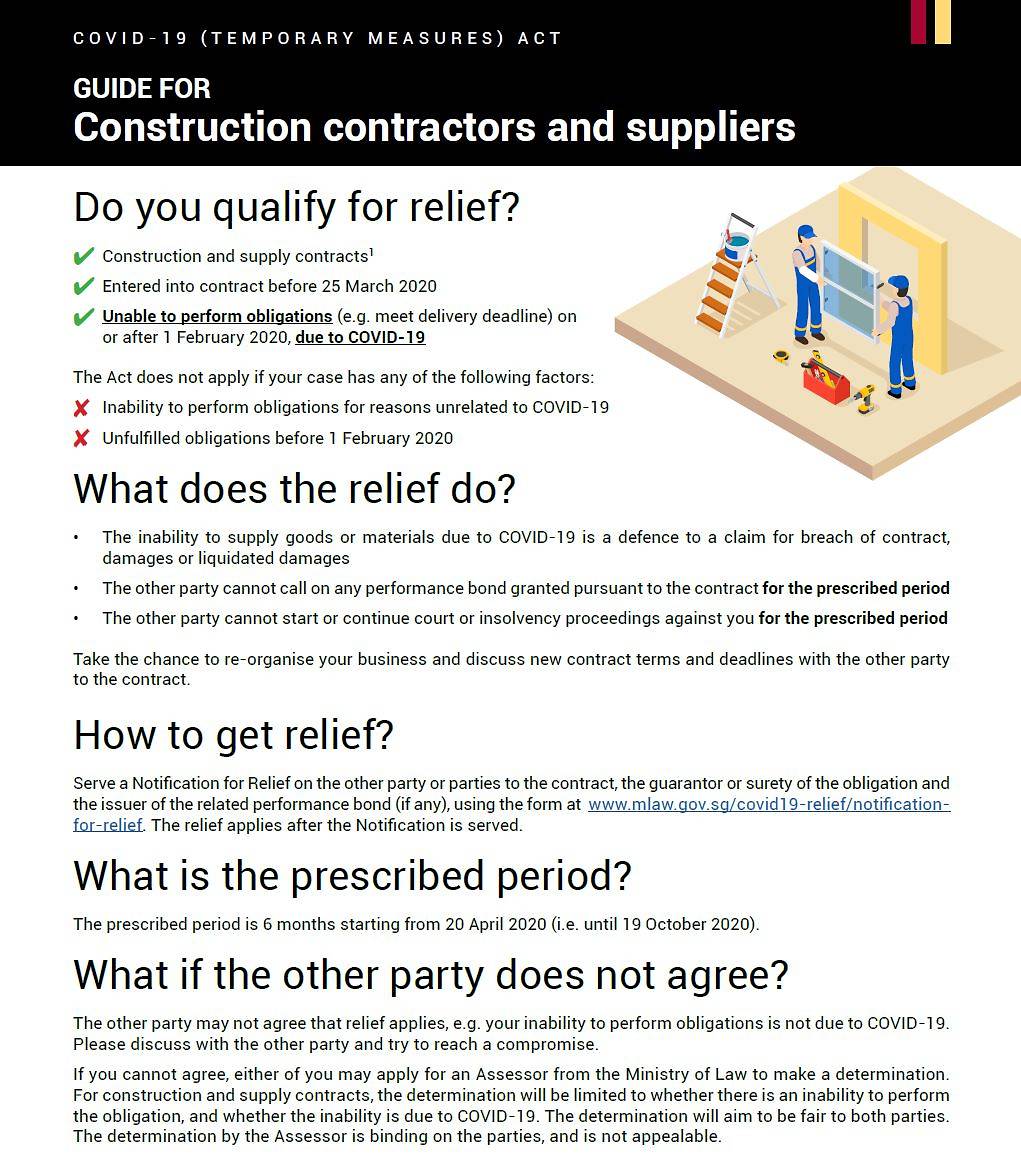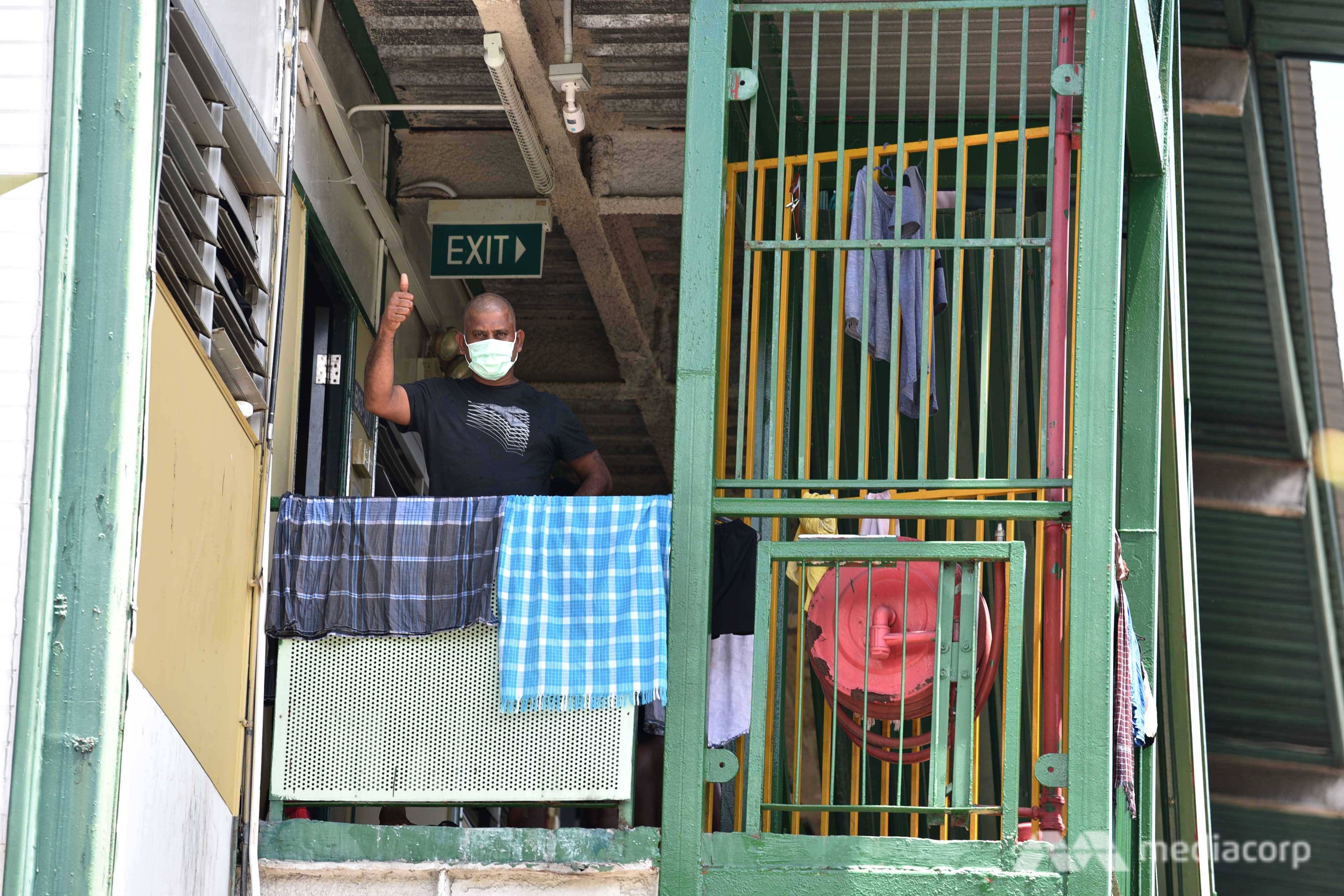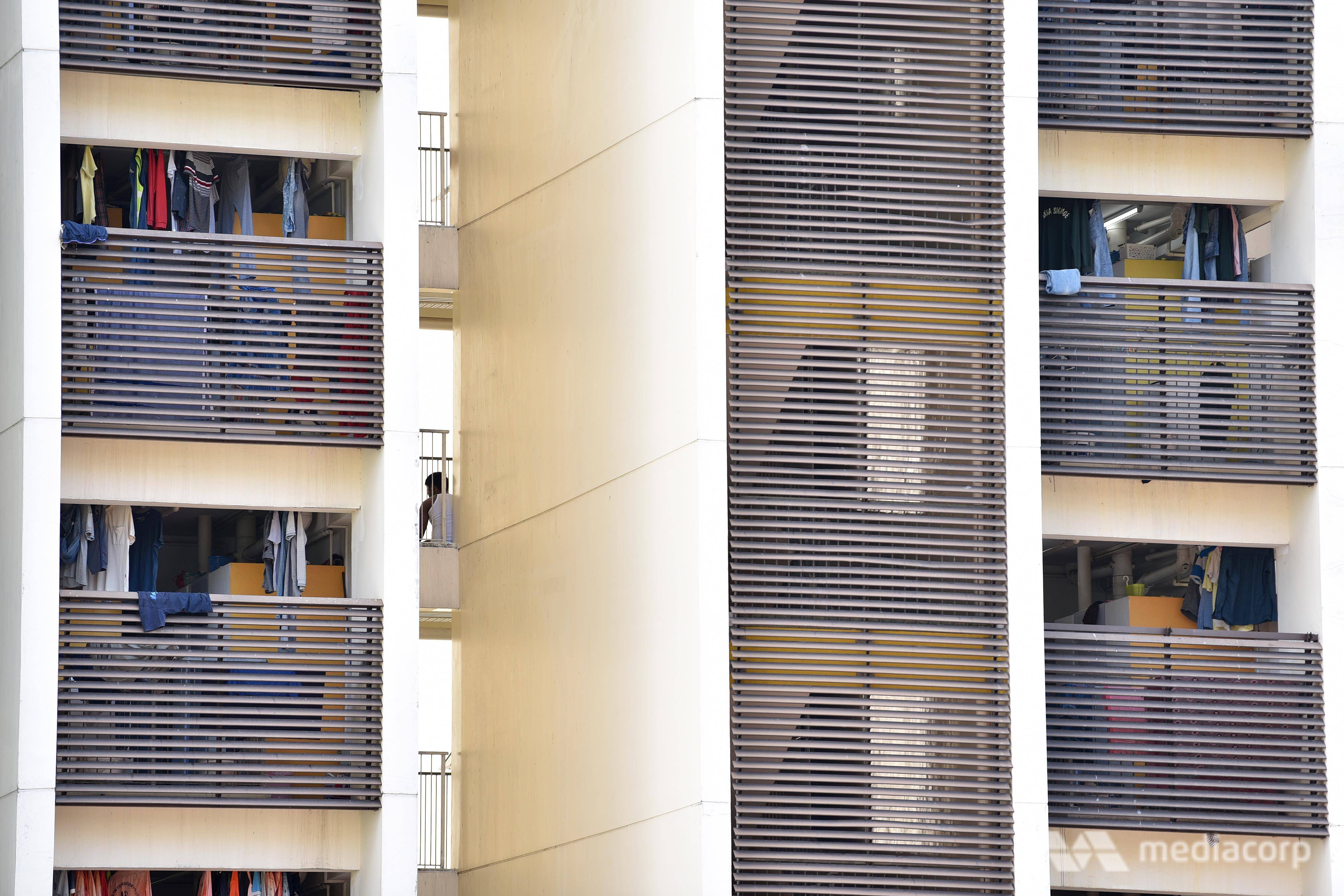SINGAPORE: The COVID-19 “circuit breaker” measures could delay construction projects by months, contractors said, predicting a manpower crunch when they eventually try to clear the backlog.
Contractors said they will speed up work after the circuit breaker is lifted by deploying more workers to job sites. But they said this will prove difficult, with limited manpower and little chance of adding workers from abroad due to COVID-19 restrictions.
Even then, the contractors stated that projects might not immediately resume as manufacturers of construction materials will need time to restart processes. Any resumption of work will also depend on the condition of workers, they added.
Thousands of foreign workers in Singapore – a number of whom work in the construction industry – have contracted COVID-19, making up a majority of the country’s cases in recent days.
Since Apr 7, all construction work has been halted as part of the Government’s circuit breaker measures to minimise further spread of the virus. On Tuesday (Apr 21), Prime Minister Lee Hsien Loong announced that the measures will be extended by a month to Jun 1.
READ: Two weeks and a 70-fold increase: A look into the COVID-19 outbreak in Singapore’s foreign worker dormitories
Contractors that CNA spoke to days before the announcement said they have no doubt that construction projects will be pushed back.
Singapore Contractors Association (SCAL) president Ng Yek Meng said projects have been delayed since the start of the outbreak near the end of January, as China locked down its cities which disrupted the flow of labour and materials to Singapore.
Then in March, the situation worsened as Malaysia imposed its own lockdown, he said, halting the supply of pre-cast concrete components and other construction materials.
“To date, we expect the delays to be about three to six months,” he added. “However, it can be longer depending on how the COVID-19 situation evolves and the measures taken to contain the spread.”
Construction workers wait to cross a street in Singapore. (Photo: AFP)
PQ Builders director Peh Ke-Pin suggested that projects will be delayed for another month after the circuit breaker is lifted, pointing out that construction material must first be produced.
“There’s a lead time for fabrication alone,” he said. “You need to start the kilns to manufacture cement, so the timelines will be affected.”
REVENUES HIT
While the delays might not be a problem contractually – the Government has legislated that contractors who cannot meet delivery deadlines due to COVID-19 are eligible for relief – some contractors will still try to avoid them.

The COVID-19 (Temporary Measures) Act provides relief for the construction sector. (Infographic: Ministry of Law)
The Housing and Development Board (HDB) has already said it will work with contractors to speed up construction of new flats after the circuit breaker is lifted.
“We will work closely with our contractors to track and monitor any impact on the progress of our projects,” HDB said on its website. “Should there be any delays in the completion, we will inform flat buyers accordingly.”
Construction workers in Singapore. (File photo: Ernest Chua/TODAY)
Ginlee Construction managing director Tommy Lim said delayed projects translate to lost income, especially as contractors progressively earn by completing different stages of a project.
A month without progress due to the circuit breaker would cost Mr Lim about S$400,000 in lost revenue across his 10 projects, which include commercial works like the expansion of a Google office in Singapore.
“As a contractor, you know that the more you drag, it’s not good for your overheads,” he explained. “If you can complete projects on time, you will cut down on overheads and make a profit.”
READ: COVID-19: Employers to get almost S$675 million in levy rebates to help in ‘upkeep’ of foreign workers
Overheads include building and equipment rentals, workers’ salaries as well as essential items like food and masks – costs that continue to add up even as construction sites remain at a standstill.
“From the bottom line angle, it’s a pain that everybody is going through,” Straits Construction executive director Kenneth Loo said. “The Government support eases it a bit, but it can never be eliminated.”
File photo of a construction site in Singapore. (Photo: AFP/Roslan Rahman)
According to SCAL, the construction sector has contracted 4.3 per cent year-on-year in the first quarter of 2020, “with practically no revenue” during the circuit breaker period.
The Government has tried to help businesses hit by COVID-19 through a slew of measures, including foreign worker levy waivers, property tax rebates and bridging loans for small and medium enterprises.
SCAL’s Mr Ng said more help from the Government and industry stakeholders is always welcome. “Contractors are concerned with their cash flow and the ability to sustain the company through this difficult time,” he added.
MANPOWER CRUNCH
So when job sites finally re-open, Mr Lim believes that most contractors will try to speed up work to meet deadlines. This is done by adding more workers and machines.
“I can put in an extra one or two teams of three workers each, and add one or two sets of machinery,” he said.
Construction workers from Bangladesh and India attend a briefing before starting work at a construction site in Singapore March 24, 2016. (File photo: REUTERS/Edgar Su)
But if this is multiplied across different projects, the contractors feel there won’t be enough manpower.
“When you rush after (the circuit breaker is lifted) and you have a limited timeline, you might eventually need to add 100 per cent to your workforce,” Mr Peh said.
“That kind of requirement is very difficult to meet, because in this period of time we can’t increase workers (from abroad) anyway.”
The Ministry of Manpower will only allow the entry of work pass holders into Singapore for those providing essential services, such as in healthcare and transport.
READ: COVID-19: All work permit and S pass holders in construction sector to be placed on stay-home notice
While contractors can outsource their foreign manpower needs, Mr Lim and Mr Peh said these “general workers” are usually not very skilled and only serve to make up numbers, especially when specialist machinery is involved.
To avoid these problems, Mr Lim said he has applied for a waiver to resume work on a number of projects he is involved in that might be considered essential, including work to operationalise Changi Airport’s Runway 3 by October.
The Changi Airport Group said on its website that work is ongoing to connect Runway 3 to the airport’s two existing runways, before Runway 2 is temporarily closed for the next phase of infrastructure works for the Changi East project.
A view of Changi Airport. (File photo: Changi Airport Group)
Building and Construction Authority (BCA) regulations state that only works necessary to maintain the job site – like stabilising structures and controlling mosquito breeding – can continue during the circuit breaker.
“I really hope that within (this circuit breaker) I can resume whatever work,” Mr Lim said, adding that this will have to be done in accordance with strict health and safe distancing measures. “If I can finish one job, then it’s one less problem.”
CNA has contacted BCA for comment.
File photo of construction workers erecting scaffolding in Singapore. (Photo: AFP/Roslan Rahman)
While contractors can make plans to start work as soon possible, Straits Construction’s Mr Loo said “at the end of the day, it depends on resources in the market”.
“Everybody will try to do their utmost best to meet their obligations,” he said. “Having said that, the workers’ condition and whether the borders will be open – whether materials and workers can come in – after the circuit breaker is still a question mark.”
STUCK IN DORMS
Still, Mr Loo said his staff are in touch with a few hundred of his foreign workers to ensure their mental health is fine during these difficult times.

A dorm resident at Cochrane Lodge 1 on Admiralty Road West. (Photo: Jeremy Long)
Twenty-five foreign worker dormitories have been declared as isolation areas to stem the outbreak, meaning tens of thousands of workers are barred from leaving their rooms for two weeks.
Workers in all dorms also cannot leave the premises as part of tighter measures imposed on Tuesday.
READ: COVID-19: Four more foreign worker dormitories declared as isolation areas
READ: COVID-19: Movement in and out of dormitories to stop as all migrant workers to suspend work until May 4
“I think mental well-being is crucial,” Mr Loo said. “There is a need to make sure workers are well-informed and mentally prepared.”
Mr Lim said his staff have taken to Zoom to address workers’ needs and allay their concerns about not being paid during the circuit breaker.

A dorm resident seen sitting along the corridors of The Leo dormitory at Kaki Bukit Road on Monday (Apr 20) (Photo: Jeremy Long)
He said his workers, 40 of whom stay in the Leo Dormitory, prefer to work.
“I told them don’t worry, we will pay you,” he added. “We want you to take this opportunity to rest also, because we expect that two to three months after the lockdown, you will be very busy.”
READ: COVID-19: Crowding, emotional health of migrant workers at dormitories concern employers
The concerns are slightly different for Mr Peh, who has one worker with COVID-19. His 120 workers live in Tuas View Dormitory, which has been declared as an isolation area.
Mr Peh’s staff and workers also use Zoom to check in on the patient, who has been moved to a community isolation facility at the Singapore Expo after his condition improved.
A foreign worker inside Mandai Lodge 1 on Wednesday (Apr 22). The dorm has been gazetted as an isolation area to curb the spread of COVID-19. (Photo: Gaya Chandramohan)
“We couldn’t contact him previously, so we were so worried that his handphone battery was flat,” he said.
“We bought a charging adaptor and cable and sent it to the hospital. We found that he had been discharged, so I got my supervisor to send it to Expo.”
“We cannot let the workers feel deserted,” he added.




